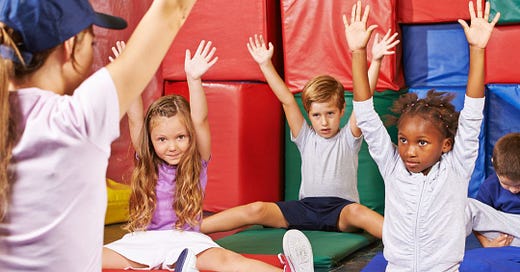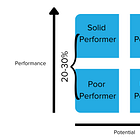Why We Need to Coach Specials Teachers Early in Elementary
Get strategic with your visibility in certain pockets of the school in the first days
There’s a quiet corner of the school where culture gets built—and too often, it's ignored.
It’s the art room. The gym. The music classroom. The library. The places where glue sticks dry up and dodgeballs fly and ukuleles go slightly out of tune.
It’s our specials teachers. And they see every single child, every single week.
So why, in so many schools, are they the last to be coached—if they’re coached at all?
Let’s call it what it is: a gap in our leadership practice. One that costs us more than we realize.
The Culture Builders We Forgot
Here’s the thing about specials teachers: they are culture setters. Period.
On Day 1 of school, your PE teacher may be the first adult a kindergartner sees after their homeroom. The art teacher might be the one to comfort a teary second grader who misses home. The librarian might be the first to notice when a fourth grader is already checked out emotionally.
They don’t just see kids. They see all kids—which means they’re walking, talking barometers of school climate. They catch patterns before anyone else does.
So when specials teachers don’t feel seen, supported, or developed, the ripple effect touches every hallway.
Coaching Early Isn’t Just Nice—It’s Strategic
A lot of leadership calendars save “specials support” for October or later. The logic is to get core content settled first. Specials can wait.
But that delay is a mistake.
Because by the time we get around to it, we’ve missed the window when routines were forming, relationships were fragile, and culture was still wet cement.
Coaching specials teachers early means:
Helping them set strong behavior systems with 600+ kids
Co-creating norms that mirror the rest of the building
Reinforcing the same language and expectations that classroom teachers use
Catching burnout signals before they become resentment
Specials Teachers Deserve More Than a Wave
Let’s be real. Many specials teachers operate on an island. They’re left out of PLCs. They’re rarely included in walkthrough rotations. Their feedback is often vague (if it comes at all), and their growth gets overlooked.
It’s not malicious—it’s just habitual. But habits can be changed.
Start with presence. Show up in their rooms early and often—not with a clipboard, but with curiosity.
Start with value. Ask what support they need to make transitions smoother, to reinforce SEL goals, to connect their content to the rest of the school.
Start with feedback. Give one clear thing to try, and come back to see it in action.
But how?
Sample School Leader Day Schedule
7:15–7:45 AM – Arrival Presence at Front Doors & Buses
Greet students, support staff transitions, and check uniforms/IDs. Build relational capital early.
7:45–8:00 AM – Hallway Transitions + Touch Points
Walk hallways, pop into 2–3 classrooms for informal waves or quick redirection. Say hi to early adopter teachers.
8:00–8:15 AM – Specials Hall Presence
Observe transitions into specials, reinforce expectations, and notice student behavior trends. Ask: are the routines sticky yet?
8:15–8:45 AM – Observation: Early Adopter Classroom
Conduct a focused, low-inference observation. Use a tight lens (e.g., checking for checks for understanding or transitions).
8:45–9:15 AM – Write Feedback + Prep for Coaching
Craft your observation feedback. Prepare for coaching.
9:15–9:45 AM – Coaching Conversation (30 min)
Meet with a previously observed teacher. Anchor in evidence, align to goals, set a bite-sized next step. Leave with clear ownership.
9:45–10:15 AM – Email & Admin Time
Clear the inbox, respond to urgent items, and flag any needed follow-ups.
10:15–10:45 AM – Visit Two More High-Priority Classrooms
5-10 minutes in each room for informal check-ins or look-fors. Leave a sticky note or quick message if appropriate.
10:45–11:00 AM – Specials Classroom Drop-In
Pop into a second specials class—notice engagement, behavior, and how routines are holding.
11:00–11:30 AM – Lunchroom Presence
Connect with students, monitor transitions, support the lunch team. Small moments matter.
11:30 AM–12:00 PM – Your Own Lunch + Email Triage
Eat. Hydrate. Knock out 5-minute tasks and prioritize afternoon follow-up.
12:00–12:30 PM – Office Hours for Staff Walk-ins or Planning
Be available to your people—or use the time to plan for a grade-level meeting or IEP.
12:30–1:00 PM – Recess or Specials Hallway Presence
Help with transitions, redirect as needed, and catch one quick informal conversation with a specials teacher.
1:00–1:30 PM – Strategic Meeting or Family Call Block
Touch base with support services, counselors, or families to close loops.
1:30–2:00 PM – Classroom Visit or PLC Drop-In
Listen for what teachers are grappling with. Not just a presence—be curious and useful.
2:00–2:30 PM – Prep Time (30 min)
Review student data, prep for tomorrow’s walkthroughs, or write a weekly staff message.
2:30–3:00 PM – Re-engage in Classrooms or Touch Base with a Teacher
Especially someone who isn’t on your radar often. Build equity in visibility.
3:00–3:30 PM – Dismissal Presence at Buses, Cars, or Walkers
End the day with presence and purpose. Help with flow and student behavior. Wave goodbye.
If you are looking at this schedule and thinking, ain’t no way. I would recommend all school leaders engage in Together Leader training. It’s super helpful for building schedules like this to keep your day focused on the things that matter and not drop any balls.
We Set the Tone by Who We See
When leaders coach specials teachers early, they send a powerful message:
You matter. Your role matters. And we build this together.
That message doesn't just impact one teacher—it travels through 600 little humans who go home feeling a little more seen, a little more safe, and a lot more connected.
Post-Script for the Number Nerds
In case you were curious about the numbers: In the United States…
PE Teachers: I couldn’t find a specific number.
Art Teachers: Approximately 42,000
Music Teachers: Approximately 71,000 (old data)
Visual Arts Teachers: Approximately 38,000 (old data)
Let’s talk about it.
Huge thanks to my fellow Illinois buddy and high school art teacher, CA McCullough, for the spark of inspiration.
I want to open up a conversation—especially with secondary school leaders.
Do you see this as important? Do we give our specials and electives teachers the coaching and presence they deserve?
I’ll admit it: I’ve advised leaders not to spend time in specials classrooms. And now? I regret it deeply.
The implications for school culture, student experience, and teacher morale are real. I’d love to hear your thoughts.






